We thought that we had forgotten about the grim reaper, the bitch, the slut, The Death... Advanced medicine, heart transplants, organ transfers, the number of centenarians in France was multiplying, the gloomy shadow was no longer part of our chimerical horizons, at least we thought so. But then, because of a pandemic born in China and spreading at full speed (and because of stupid and asocial people who parade in our country like fairground calves, refusing the vaccination), here it is again, at the corner of a bad cough, ambushed and ready to mow us down.
An event, a news item at first, which very quickly became history, a milestone that will forever mark our time and which will live on in all memories. What will be said about these past fifty years1, about our forgetful morgue, and about this spirit of meaninglessness and inept individualism that is part of our so-called modern communication practices, what a big deal! How will our society, full of guilty egoisms, be judged!
Here are opportunities of fear which agitators of all kinds with nauseating ideas seize. “Freedom, Freedom…!” shout the fools who refuse to be vaccinated, thus distorting this luminous value on the pediment of our Republic. You know what Daladier( Once French Prime Minister) said in September 1938, coming back from Le Bourget airport after having met Hitler in Munich: “Ah, the idiots!” ( originally: Ah les cons !). It’s a bit the same thing.
It takes time and generations for our mental corpus to change, let’s be precise because it is essential: for our atavistic, reptilian, totemic or religious fears to fade away, while all the gurus and little masters of thought bloom like daisies in springtime in their closed chapels. A subject that cannot be summarized in one sentence or one formula, of course, and that it might be appropriate to go into in greater depth later on. We will come back to it.
The most sublime reaction to death, is it not therefore art, beauty, this very human spirituality, this challenge to exist which raises us to the firmament of our fragile condition, and makes each of us the equal of the gods! “Long live life!” we say in an old language of spirit and memory, to wish glass in hand health.
Death then, and naturally COVID obliges, the epidemics, we have had many times the opportunity to deal with the subject in WUKALI. We have even devoted an article to the history of these catastrophic epidemics in the world.
Its reality, far from sight, hidden in dedicated rooms of hospitals, or on the theaters of events where the unacceptable happens.
In this article, we address a particular aspect of thanatopraxy, presented by one of its distinguished servants, Frantz Catarelli. With an alert pen and a certain amount of indispensable humor, he reveals the mysteries of his profession. The style is playful to talk about dramas, heavy and violent things, inevitable in any case to treat such a subject, a salutary protection.
Pierre-Alain Lévy
How difficult it is to deal with the subject of death and to start talking about our own ending.
This ending, symbolized by death, finalizes your journey as a human being. The inescapable one, and which is translated by the complete and final cessation of the life of a person, an animal, or a plant. Because often and without you realizing it, your body fights silently to stay alive every day. It continues its tireless fight against the aggressions that could damage it, striving to win these many battles every day, which it will eventually lose inexorably as time goes by.
Do you think then that a “minimum standard time” capital is really due and acquired? If so, I will remain cautious about this statement. It is just obvious that you will live until the end of your days, which can happen at any moment. Let’s remember that we are all on death row for our entire lives, since from the moment we are born, we are condemned to die!
It is moreover these sentences executed daily by death, which allow me to work, and thus to eat.
So in this in-between period that you and I share through this text, and also to thank you a little for being condemned, I would like to make you a small commercial gesture, by sharing with you, some backstage information about the grim reaper.
But to understand a certain point of view, perhaps we should start by asking ourselves what a thanatopractor is?
From some definitions
Thanatopractor: association of “Thanatos” (Θάνατος) , Greek deity of death and praxein ( πρᾶξις perform a manual operation in the sense of operating). It is therefore post-mortem surgery in the etymological sense of the term, aimed at preserving the body of a deceased person.
In short, we transform corpses into the deceased, by preserving them through the use of chemical processes, or by repairing them when they have suffered mutilating damage. This is called thanatopraxy care for the former, and thanatoplasty care or integumentary repairs for the latter.
The dead are our raw material, the funeral homes, the health institutions and the homes, our theaters of operation.
Moreover, when I cross the corridors of the nursing-homes with my suitcases, you only have to see how the little old ladies follow me with their eyes as if I were a servant of death who was going to make them cold! Their distrust of me inevitably makes me smile. But then they seem to interpret this expression of benevolence, like the smile of a white shark, which would mean “see you soon little corpse! “
Let’s remember that we work on the dead but only on behalf of the living. Because the dead live only through the living, who strive to keep the memory of the dead alive, like a candle flame that we try to protect from the storm of oblivion.
It’s a strange feeling where we are often congratulated for our technical prowess and accompaniment, but where we also feel unloved, as if the profession seemed to suffer from a deep lack of recognition, sometimes “inzustrated” as Calimero would say.
Because thanatopraxy remains a taboo profession, of shadow and of great solitude. The classification of our profession as a “lone worker” has never been more appropriate! So much so that we often work alone in the midst of all these inert bodies, in dark basement rooms, under flickering neon lights, tucked away between the laundry room and the garbage room.
What about death?
If we know a little more about the thanatopractor, what about death, his main supplier?
Death often remains an accomplice to injustice, where only the obligation of result prevails and it doesn’t matter what’s at the end of the scythe. The rule is unique and easy to remember: Those who must die, …must die. Period. It’s a job with a lot of potential, but it couldn’t be simpler. It’s a good thing, if you’ll pardon the expression, because Death is an inveterate worker who “kills himself” at his task: no union break, no lunch break, no bathroom break. Death is terribly conscientious and never puts off until tomorrow what needs to be done today.
He would make any employer who dreams of an efficient workforce drool by being voted the model employee of the century. Because he never has a stomach bug or gets pregnant ( “death“is a feminine word in French…), climbs stairs without getting out of breath, his calculation precision is better than an atomic clock, travels everywhere without using a drop of fuel, is not unionized despite the pressure of his workload, even on Sundays and holidays. Always the first to arrive and the last to leave, he mows 24 hours a day, 7 days a week. His equipment is always operational, maintained and sharp. Squelettine wears black easily, although the slimming aspect is not his highest priority. Like the young people of the housing estates, he knows how to wear the hood, and knows how to make himself respected by all, but without spitting everywhere. And the holy grail, no retirement expected the next few million years..
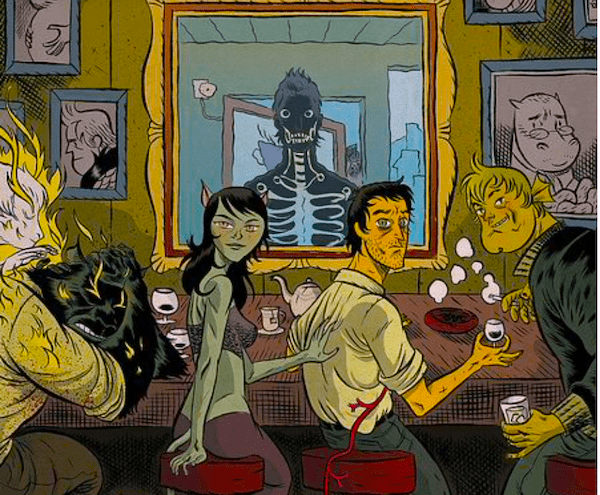
But there is a snag: Black humor is not his strong point, unlike thanatopractor’s who play with it on a daily basis: Laughter remains the hallmark of Man, and all jokes have an end. And he knows how to remind us of this. So he doesn’t like to play cards with those in the retirement homes who are trying to stay alive, while trying to kill time. He remains stoic when he sees himself in the tarot deck of these provocative residents. So if cards are not his favorite game, he loves the game of jacks, as tough as those of Jeanne Calment ( a Famous French woman who died at the age of122 years, she was the oldest human being all over the world) ,that he had almost forgotten. This little delay of reaping is forgiven to him, because “any delay, allows to better find oneself“.
If death is not very sociable, and he speaks little, we speak much about him. If he doesn’t eat, he remains nevertheless enamored of a convulsive bulimia to cadaverize everything that passes within reach of scythe. In the city and in the country, at sea and in the air, on roads and on rails; and on everything that passes by: animals, insects, plants, men and women, solitary and whole groups, young and old, hermit and public, fat and thin, tall and short, rich and poor, assholes, poor assholes and rich assholes. From snowy plains to desert plateaus, from the abyssal depths to the depths of space, no one escapes him. Whoever you are, or whatever you are, even if you haven’t finished what you were doing (and I’ll let you imagine), time is time.
Silently mowed down, these poor souls disappear massively on a daily basis, and with them, whole sections of the memory that constitute our societies and which are crumbling away as they gradually disappear into oblivion. Discreet witnesses of these usual carnages, the thanatopractor(s) take care of many bodies which rest in the mortuary after the mortal sentence. Visible, are the stigmata that testify to the rigor of relentless battles with the disease, or as if dazed to have suddenly met at the bend of the years, this dark familiar so feared. One, two, three, sun game… Lost. One cannot hide indefinitely.
This is why the thanatopractor does not like death. Because if we work discreetly in his wake, this does not prevent us from noticing all human distress that is witnessed with atrocity every day before our eyes, making us as helpless as sensitive.
Meticulous, Death does not forget the thanatopractors either. And yes, if the deaths that he sows allow us to be substantive, to forget that dying would happen only to others, would be a fatal error. .
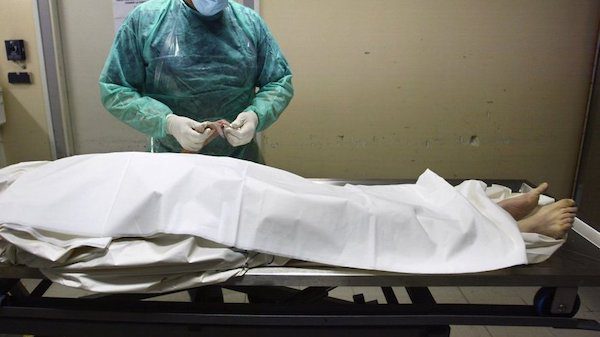
Because the nuance remains crucial: working alongside it does not mean working with it. Because if some people love death, notwithstanding the goths, thanatopractors do not idolize him. It is obvious that a speed-dating between a thanatopractor and death would quickly become toxic for one of both. And when one of us is broke, (and the salary paid by our employer has nothing to do with it), it sounds like a reminder of the obvious: Thanatopractor are not immortal and must not forget that they are only little post-mortem hands. Many of our colleagues have lost their lives, psychologically devastated by the experience of their macabre interventions. Thus, in turn, the embalmers are embalmed just like the sprinkler is embalmed. And the circle is complete!
But fortunately for the population that doesn’t see anything, thanatopractor’s are like sharks’ teeth: If one falls, another one replaces it, because curiously, there are always candidates interested in this so singular job. Or should I say candidates, because the profession is becoming more and more feminine, which does not fail to ravage our thanatomobile bodywork budget!
But let’s get back to this death that precedes the arrival of these bodies that are entrusted to us and that end up on our autopsy tables.
8 billion. 8 billion people living on this globe as I speak. It is obvious that there have always been many more dead than living people in activity, in our great house that we call the world. I am left wondering. But how many dead people has this planet seen over the centuries? The number must surely be astronomical…
Cemeteries, necropolises and ossuaries
And the more dead there are, the more death is glorified. It loves the funerary art erected by men, shaped here and there in cemeteries around the world. Modern tombs flourish with traditional vaults, and imposing mausoleums compete in grandeur in memory of the remains that are slowly disintegrating in their breasts. Observed in many cemeteries where it is represented, it is particularly fond of the monumentalization of mass mourning as this American necropolis located in Saint-Avold in Moselle, France, where more than 10,000 men rest. In the same register, all these military cemeteries in Verdun, the world capital of peace. One of its most beautiful sites.
So many graves, erected in a forest of crosses, timeless and unreal decor, frozen historical testimony of so many fallen soldiers. Real hecatombes identified by the presence of numerous mass graves, consequence of the complicit promiscuity between war and death. Thus come out of the ground, artistic conceptions of fields of crosses, to the only limits of horizon that to that of our sight; as many macabre trophies, to the height of the madness of the men. Because if death comes, it is also because Man calls it, always working to start fratricidal wars, massacring his fellow men, and all that lives for some ideas or pieces of geographical map. For Man, we must shamefully admit, often remains the armed arm of death.
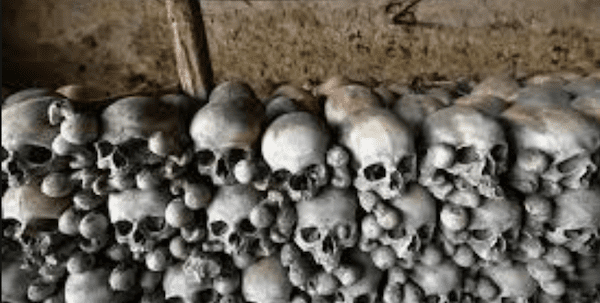
Photo L’Est républicain
All these bodies, below, phagocyted by the kingdom of the dead, under billions of steles, and above, we, the living, simply separated by a thin layer of earth. Two worlds so distant and yet so close…
The bottleneck
There is a sort of bottleneck that juxtaposes these two worlds. On one side the world of the dead, and on the other the world of the living. All the living must, at one time or another, pass through this bottleneck if they want to become dead. It is the passage from life to death, it is the crossing of the Styx, (the river of the dead). It is once passed this gully that the human changes denomination, by becoming a dead person, with the obligation to be no longer alive and to remain contractually well dead.
The time of passage through the bottleneck could be likened to what we call agony. This is the time that elapses when an individual is no longer alive enough, but not dead enough. It is true that billions of living people have already passed through this bottleneck, and there have always been a few reluctant to die. But death doesn’t like to leave room for hope, and the bottleneck is in principle one-way, equipped with a non-return valve, mainly intended to avoid any “re-entry“. Oh yes, I forgot, just like every important exam of his life, the living person who has become dead is entitled to his burial or cremation permit (but without the points and the remedial courses). The bureaucracy being sovereign, his passage through the gutter is also certified by a certificate… of death.
So yes, it is at the exit of this bottleneck that the thanatopractors are all waiting, …for work. A bit like the chicks in the nest waiting patiently for the beakful… Because it’s a job that requires patience: And for good reason, you can’t miss it, because people only die once, if they are not listed as werewolves, vampires or living dead.
Although I will grant you the exception of the last category, which is discreetly mixed up among us. For there are indeed living dead, (meaning those who live with parts of corpses in them, and that we call so nicely: organ donations. But, these almost dead people, when all is said and done, only benefit from a few extra years, which are very derisory on a time scale.
I see them, these poor remains, which have been used as if they were in a car wreck. I have the unpleasant feeling that I am doing my job halfway. On the laboratory side, I have to treat some organs that are fighting a duel in a cold carcass, and on the other side we have transplanted organs that are wandering around the city in many different bodies.
But fortunately, we end up getting everyone back over time, and the spare parts for that matter, that they were attached to.
There’s no denying it, you don’t see people the same way. To understand this job is to accept that someone has just died. It means accepting that what was valid a few hours ago is no longer valid. It is also to accept a biological countdown. The implacable one of the degradation of the body.
Because contrary to what we might think, the body degrades very quickly. The forensic medicine courses in our curriculum, and the passage in the dissection room of the medical schools remind us that this almost ineluctable degradation is well identified. It is called thanatomorphosis.
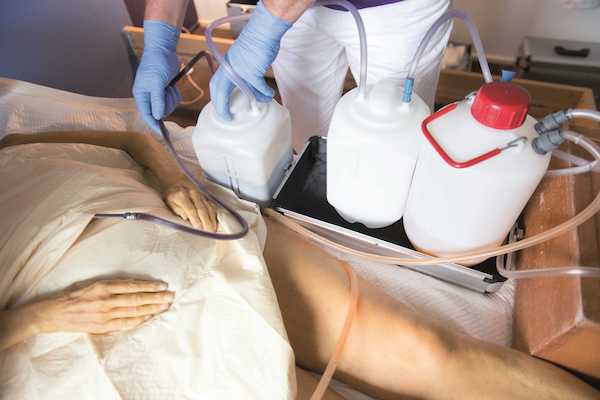
There we enter the dance, certainly macabre, but necessary for the well-being of the living. We intervene by an injection system, by massacring billions of living beings called bacteria, responsible for a large part of these spectacular degradations. Halloween or any horror movie seems like a child’s play next to this cadaverous putrefaction, helped by the appetite of some particularly epicurean opportunist insects. Vegans beg to differ, most of us (who would have decided to avoid the pizza oven) will be eaten by super carnivorous little worms, and not by harmless broccoli. But don’t worry, the process of self-destruction of our little bodies will be creepy, but 100% organic!
In the middle of all these daily deaths that do not surprise anyone anymore, almost going unnoticed, road accidents, cancers, domestic accidents, and a little less discreet, homicides…
In no time, ad patres, from life to death
So go, but how are we going to get down from life load?
I see two groups: Those who come to seek death, and those whom death comes to seek. It’s already getting cold because the discussion is becoming more graphic.
In the first group, it is mainly what we call suicides or autolysis. Auto and lysis (Destruction of organic elements by physical, chemical or biological agents). As the other said, “Without the idea of suicide, I would have killed myself forever” (see article published on suicide in WUKALI)
Surprisingly, whether it is decided or suffered, suicide shows a great diversity of methodologies. If we take the example of a hanged man, some are “classic“, i.e. at the end of a rope to anything that can be hung. Others are more ecological and hang themselves in the forest in the middle of singing birds, others are more desperate and hang themselves from great heights such as bridges, stairwells, or high voltage electrical pylons.
Naturally, and this is easily understandable from an anatomical point of view, the damage to a body is very different, depending on whether one hangs from a radiator giving the effect of a person sleeping in an unusual position, or the decapitation of a man who has hung himself from an overpass.
Attention, sensitive characters, the following may not be for you
We will not give a course in forensic medicine that identifies the different methods of hanging, but it is clear that the methodology used will necessarily lead to a different death, more or less painful, and more or less spectacular for those who discover them.
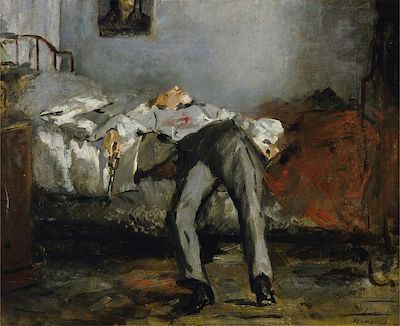
Collection Emil G. Bührle, Zurich.
I was saying that in suicides, humans always find particularly diverse solutions. It goes from taking lethal drugs, which is more common among women, to hanging and firearms, which are more common among men. And since death is not necessarily romantic, some people end their lives in very disconcerting ways. Between the one who throws himself into the void, from a bridge, a building window, from the top of a crane, and who lands on sidewalks, cars, garden gates, canopies or catheners… The one who asphyxiates in his car, the one who throws himself into the canal, the one who sets himself on fire, the one who crashes in a plane, the one who slits his own throat, the one who poisons himself in a group, the one who throws himself under a train, the one who drives voluntarily against the direction of travel, the one who blows his coffee pot off the ceiling with a shotgun, or the one who turns his chainsaw on himself…
In the other category, those whom death comes to get, let’s recognize to it also, an imaginative diversity without limit.
Let us quote as examples, the one who peacefully falls asleep in his bed and will not wake up, the one suffocated in his grain silo, crushed under a tree trunk, drowned in a pond, cut in two by an excavator, cooked in his bath, suffocated by a meatball, frozen on the edge of a sidewalk, crushed under a hay bale, drowned in a cesspool, electrocuted, struck by a heart attack, suffered a stroke in his bowl of Kellogg’s, split by microlight propellers, blown up with an explosive, poisoned by his mushrooms, poisoned by carbon monoxide, unscrewed from a rocky slope, charred in his apartment, suffocated between the bars of his bed, crushed in his car, … and so many others.
A word about the road accidents so widespread and commonplace today. These are violent deaths where life comes to a sudden and unexpected end. How many parents have had lunch with their children, and never returned in the evening, mowed down by a crazy motorist or scooter? How many young people have gone to a club on Saturday night, and only returned to a “club” after being crushed into a tree, crushed between two trucks on the highway, or burned alive in their own cars still flanked by the proudly acquired “L”?
For years, how many bodies have I treated with torn limbs, crushed faces, burned bodies like dislocated and dehumanized puppets. How can you keep a certain serenity during these interventions when you hear the families screaming in pain behind the doors of the rooms, desperately waiting for you to give them back their deceased. A weekly batch of dramatic disappearances of these people who lost their lives because they wanted to have fun without respecting the rules. A real silent harvest that devastates entire families and all those collateral victims who crossed them on these deadly roads.
Return on oneself
Becoming a thanatopractor means accepting not only the death of others, but also one’s own finiteness. It is to accept that we have at best a few years left in a rented body that we will have to return one day. For “as soon as a man comes to life, he is immediately old enough to die”. Yes, dying remains a fatality for each of us.
With hindsight and a certain height, I notice that if death is a natural process, man plays a preponderant role in it by provoking it, taking himself for a superior entity, deciding who had the right to live and to die by inventing the atrocity of certain deaths. Which one should we fear more? Man or Death? Isn’t death the one who holds the steering wheel, the knife or the gun?
I have been observing the hidden phase of life for twenty years now. I still haven’t vomited, as I was told, I still haven’t fainted, as I was told. Today, after thousands of interventions, I must admit that I don’t know much about him, and that maybe I will understand who he really is, when he comes to get me, but am I ready? Are you ready? …
Then don’t wait, live. Live each day as if it were the last and tell those you love, that you love them. For tomorrow may well be mortal.
Let’s quote Emil Cioran as a final oration: “Deep inside, everyone feels and believes himself to be immortal, even though he knows that he will expire in a moment. One can understand everything, admit everything, realize everything, except one’s death, even though one thinks about it relentlessly and is resigned to it.”
I dedicate this work of reflection and writing to my Master thanatopractor, Paul Clerc, who has passed into the afterlife


